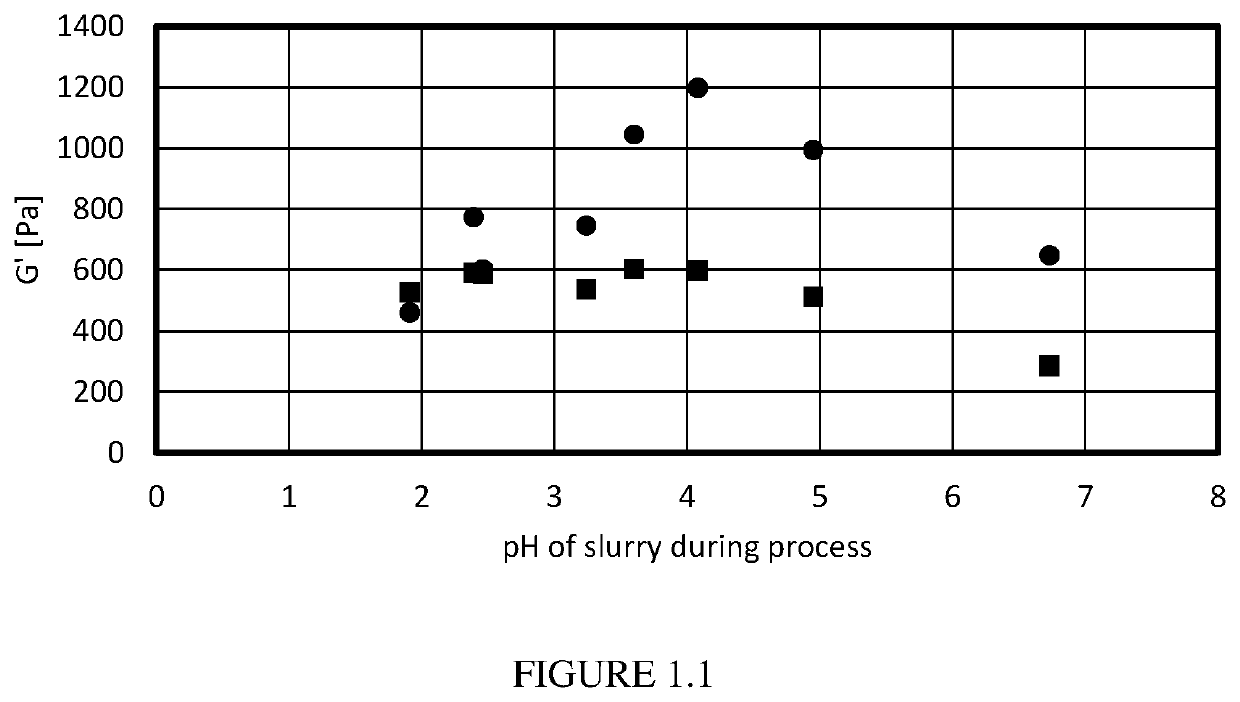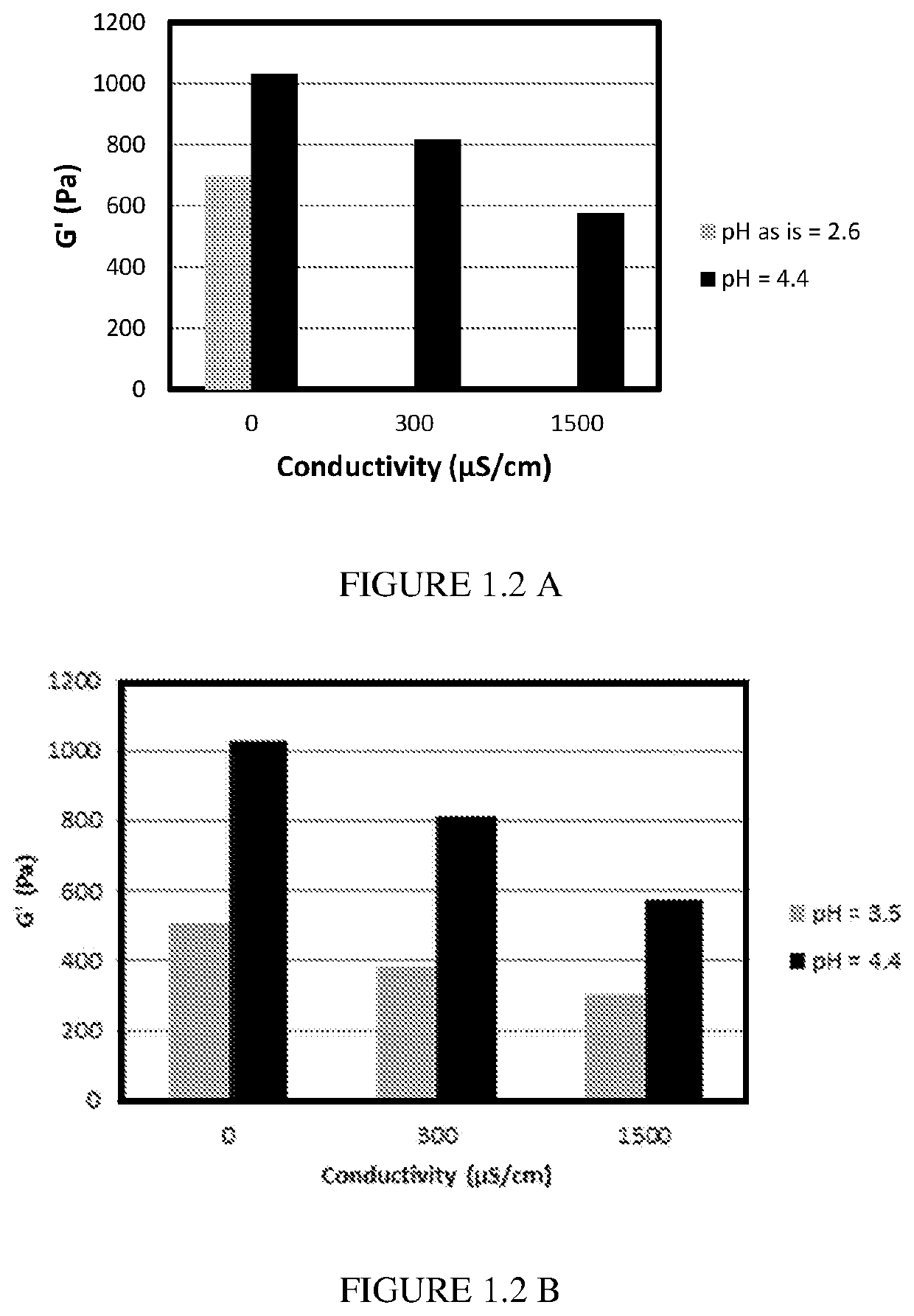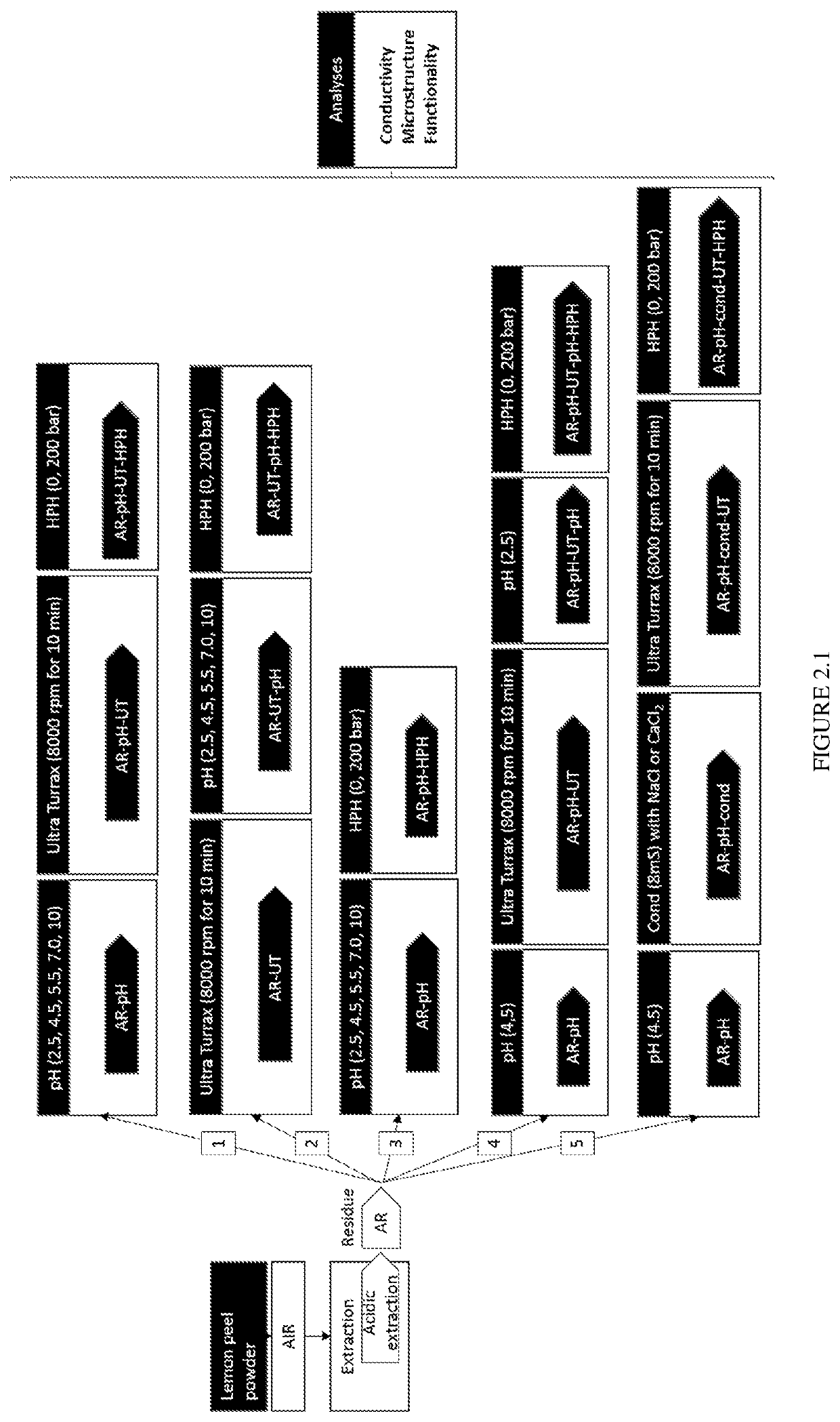Citrus fibers and applications thereof
- Summary
- Abstract
- Description
- Claims
- Application Information
AI Technical Summary
Benefits of technology
Problems solved by technology
Method used
Image
Examples
example 1
[0123]Dry lemon spent peel fibers were manufactured as follows:
Step (1) Water was added to de-pectinized lemon peel (a by-product of a pectin extraction process, wherein the pectin was extracted by acid to a level of about 50 wt %, pH about 1.9) to obtain an aqueous slurry having a dry substance content of about 4 wt %. The slurry was sieved through sieve with pore size of 500 μm. The slurry's pH was adjusted with a 10% NaCO3 solution to different values between 1.9 and 7.2. The slurry was one time charged to a pressure homogenizer (APV homogenizer, Rannie 15-20.56) at 600 bars. An aqueous slurry containing citrus fibers was obtained.
Step (2) A precipitation tank was filled with an aqueous isopropanol solution (about 82 wt % isopropanol in water). The aqueous slurry containing citrus fibers was brought under agitation into the precipitation tank by using a volumetric pump and a precipitate in the form of granules having sizes between 5 mm and 50 mm was formed in the tank. The slurry...
example 2
[0124]Dry lemon peel fibers were manufactured as follows: Example 1 was repeated with the difference that at step (1) the pH was adjusted to 4.4 or maintained as it was (pH as is, not adjusted). The fibers were suspended in low conductivity water (conductivity about 0 μS / cm) or low conductivity water of which conductivity was adjusted to 300-1500 μm / S by adding NaCl. The properties of these fibers are presented in FIG. 1.2 (G′ in function of conductivity of the dispersing medium of fibers with pH adjustment to 4.4 and fibers without pH adjustment (pH as is) during processing)
example 3
[0125]The effects of environmental conditions, namely pH and salts, on the microstructural and functional properties of spent lemon peel (i.e. lemon peel subjected to pectin extraction by using acid, to yield acid insoluble lemon peel fibres) subjected to different sequence of processing conditions were investigated.
[0126]To this purpose dried pectin containing lemon peels were subjected to an acidic extraction in order to remove most of the pectin therein. The acid insoluble fibre residue (AR), as obtained by acid extraction, was characterized by pH 2.3 and 6.5% dry matter content. The AR was subjected to different sequences of processing operations, as depicted in FIG. 2.1.
[0127]In particular, the AR was diluted to 2% (w / w) with standardised tap water and adjusted to pH 2.5, 4.5, 5.5, 7.0, and 10.0 using sodium carbonate or hydrochloric acid. The AR suspension was either wet milled (setups 1 and 2, FIG. 2.1) or not (setup 3, FIG. 2.1). In the former case, the wet milling was perfo...
PUM
 Login to View More
Login to View More Abstract
Description
Claims
Application Information
 Login to View More
Login to View More - R&D Engineer
- R&D Manager
- IP Professional
- Industry Leading Data Capabilities
- Powerful AI technology
- Patent DNA Extraction
Browse by: Latest US Patents, China's latest patents, Technical Efficacy Thesaurus, Application Domain, Technology Topic, Popular Technical Reports.
© 2024 PatSnap. All rights reserved.Legal|Privacy policy|Modern Slavery Act Transparency Statement|Sitemap|About US| Contact US: help@patsnap.com










